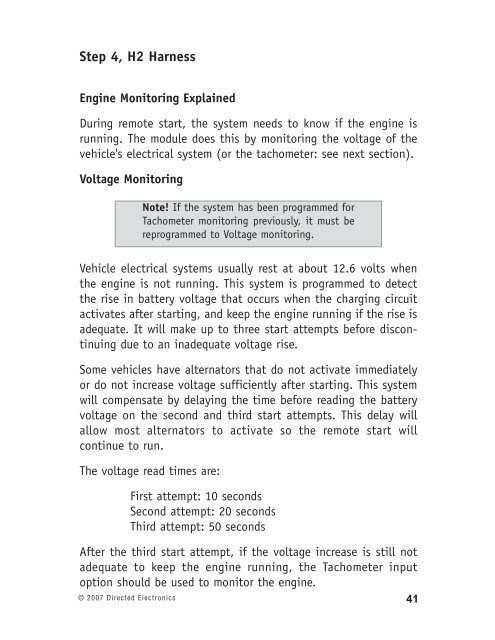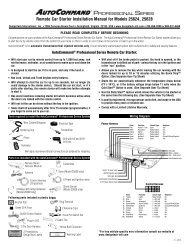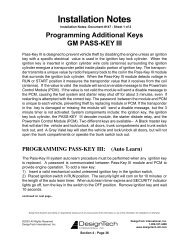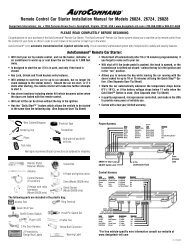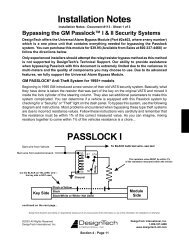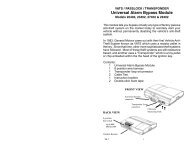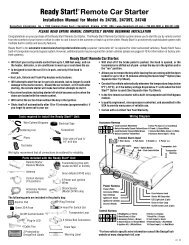Model 24927 - Ready Remote
Model 24927 - Ready Remote
Model 24927 - Ready Remote
Create successful ePaper yourself
Turn your PDF publications into a flip-book with our unique Google optimized e-Paper software.
Step 4, H2 Harness<br />
Engine Monitoring Explained<br />
During remote start, the system needs to know if the engine is<br />
running. The module does this by monitoring the voltage of the<br />
vehicle's electrical system (or the tachometer: see next section).<br />
Voltage Monitoring<br />
Note! If the system has been programmed for<br />
Tachometer monitoring previously, it must be<br />
reprogrammed to Voltage monitoring.<br />
Vehicle electrical systems usually rest at about 12.6 volts when<br />
the engine is not running. This system is programmed to detect<br />
the rise in battery voltage that occurs when the charging circuit<br />
activates after starting, and keep the engine running if the rise is<br />
adequate. It will make up to three start attempts before discontinuing<br />
due to an inadequate voltage rise.<br />
Some vehicles have alternators that do not activate immediately<br />
or do not increase voltage sufficiently after starting. This system<br />
will compensate by delaying the time before reading the battery<br />
voltage on the second and third start attempts. This delay will<br />
allow most alternators to activate so the remote start will<br />
continue to run.<br />
The voltage read times are:<br />
First attempt: 10 seconds<br />
Second attempt: 20 seconds<br />
Third attempt: 50 seconds<br />
After the third start attempt, if the voltage increase is still not<br />
adequate to keep the engine running, the Tachometer input<br />
option should be used to monitor the engine.<br />
© 2007 Directed Electronics<br />
41


